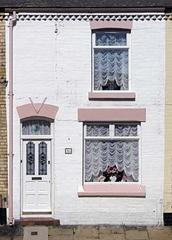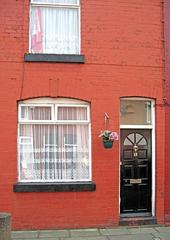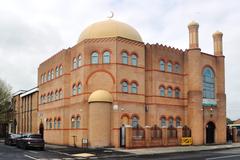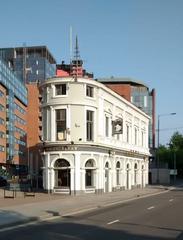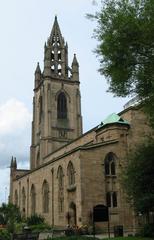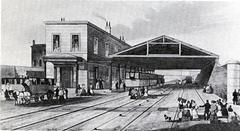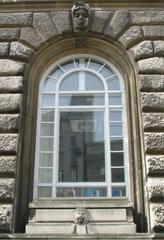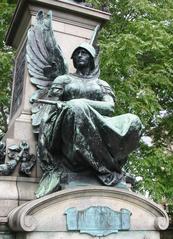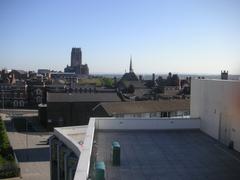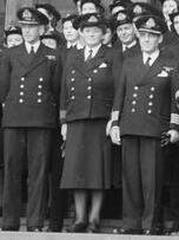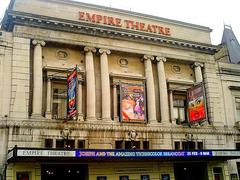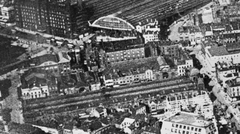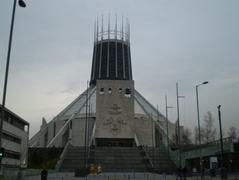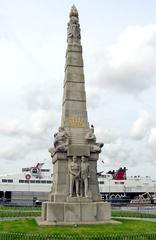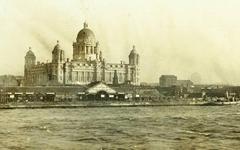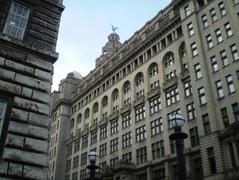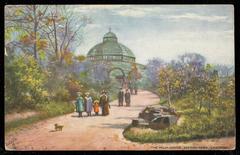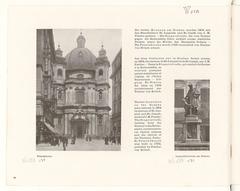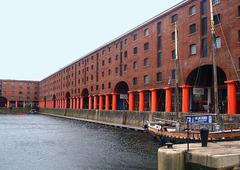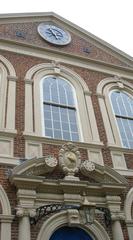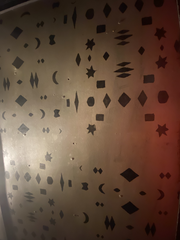Williamson Tunnels Heritage Centre Liverpool: Visiting Hours, Tickets, and Complete Guide
Date: 14/06/2025
Introduction
Beneath Liverpool’s bustling Edge Hill district lies the enigmatic labyrinth of the Williamson Tunnels—a unique heritage site that continues to intrigue historians, locals, and visitors. Built in the early 19th century by the eccentric philanthropist Joseph Williamson, the tunnels were shrouded in mystery from their inception and now serve as a window into the city’s industrial past, social history, and enduring community spirit. This detailed guide covers the history, theories, visitor information, accessibility, current challenges, and ways to support the Heritage Centre, ensuring you are fully equipped to explore one of Liverpool’s most captivating historical attractions (Wikipedia, Explore Liverpool, CityDays).
Table of Contents
- Joseph Williamson: The Man Behind the Tunnels
- Construction and Expansion
- Theories and Mystery
- Decline, Rediscovery, and Excavation
- Artefacts and Findings
- Visiting Hours, Tickets, and Tours
- Accessibility and Facilities
- Getting There and Nearby Attractions
- Cultural Impact and Community Engagement
- Economic Importance and Current Challenges
- Community Response and Fundraising
- Frequently Asked Questions (FAQ)
- Visuals and Media
- Conclusion and Call to Action
- Sources and Further Reading
Joseph Williamson: The Man Behind the Tunnels
Joseph Williamson (1769–1840) was a Liverpool tobacco merchant, landowner, and philanthropist whose legacy is inseparably linked with the construction of the tunnels that bear his name. After acquiring land in Edge Hill in 1805, Williamson began building a vast network of tunnels and chambers beneath the area (Wikipedia, EnglandRover). His employment of hundreds of local men—often on seemingly pointless or repetitive tasks—has led to enduring debate about his motivations, which ranged from benevolent to eccentric (Explore Liverpool).
Construction and Expansion
The tunnels’ construction began soon after Williamson’s land acquisition. The area was previously marked by sandstone quarrying, which Williamson vaulted over to create level ground for housing and gardens. Over time, the tunnels grew into a complex network of brick-arched and stone-vaulted passages, some as large as the “Banqueting Hall” (18.3 meters long and 8.3 meters high), while others are far more confined (Wikipedia, EnglandRover). Many parts of the network remain unexplored or blocked by rubble (Explore Liverpool).
Theories and Mystery
The true purpose of the Williamson Tunnels has never been definitively established, fueling ongoing fascination. Key theories include:
- Philanthropic Employment: Williamson may have used the project to provide dignified work for unemployed locals, helping those impoverished after the Napoleonic Wars (Liverpool City Sights).
- Commercial Quarrying & Urban Development: The tunnels may have originated as unregulated quarries for sandstone, later covered to prepare land for further construction (Wikipedia).
- Eccentric Hobby: Williamson’s peculiar instructions to workers and lack of clear plans point to a possible personal obsession with underground construction.
- Religious or Apocalyptic Motives: Some speculate that Williamson harbored millenarian beliefs and built the tunnels as a refuge.
- Underground Housing Scheme: A theory suggests the tunnels were intended for innovative subterranean housing, though no documentation survives (Liverpool City Sights).
Decline, Rediscovery, and Excavation
After Williamson’s death in 1840, the tunnels were largely abandoned, gradually filled with rubble and refuse by the Liverpool Corporation. Interest was revived in the late 20th century, and significant excavation began in the 1990s, driven by volunteers and the Joseph Williamson Society (Wikipedia, Explore Liverpool). The Heritage Centre opened to the public in 2002, becoming a focal point for urban archaeology and local pride.
Artefacts and Findings
Excavations have uncovered a wealth of artefacts—pottery, glass bottles, everyday objects—that offer insight into 19th-century Liverpool life (Liverpool City Sights). These finds, alongside the tunnels’ unique architecture, make the Heritage Centre a living museum of industrial history.
Visiting Hours, Tickets, and Tours
Standard Visiting Information
- Hours: The Heritage Centre is typically open for guided tours on Fridays, Saturdays, and Sundays, with time slots at 11:00 am, 12:30 pm, and 2:00 pm (CityDays). Some sources note opening hours from 10:00 am to 4:00 pm on certain days—always check the official website for up-to-date details.
- Tickets: Admission is free, but donations are encouraged to help maintain the site. Tours must be booked in advance due to limited capacity.
- Booking: Reserve tickets online or by phone.
Tour Experience
Guided tours, led by knowledgeable volunteers, explore key areas such as the Banqueting Hall, highlighting construction techniques, artefacts, and the mystery of the tunnels’ purpose (Museums.eu). Tours last about 45 minutes and include safety briefings; hard hats are provided.
Accessibility and Facilities
- Physical Accessibility: Due to uneven surfaces, steps, and narrow passages, full wheelchair access is not possible. Visitors with mobility challenges should contact the Centre ahead of time.
- Visual & Sensory Accessibility: Online resources include virtual tours and adjustable website features (SeeAroundBritain).
- Amenities: Restrooms and a small gift shop are available. The site is generally cool and damp—sturdy shoes and warm clothing are recommended.
- Family Facilities: While pushchair access is limited, family-friendly activities (like toy mole hunts) are offered. There are no baby changing facilities (Day Out With The Kids).
Getting There and Nearby Attractions
- Location: The Old Stableyard, Smithdown Lane, Edge Hill, Liverpool L7 3EE.
- Transport: Easily accessible by bus and train (Edge Hill station is nearby). Limited parking is available; consider public transport (Traveline).
- Nearby Sites: Liverpool Metropolitan Cathedral, Falkner Square Gardens, and other city attractions are within walking distance (SeeAroundBritain).
Cultural Impact and Community Engagement
The Williamson Tunnels have become a symbol of Liverpool’s resilience, curiosity, and community spirit. Their rediscovery and ongoing excavation have mobilized thousands of volunteer hours and inspired local pride, heritage education, and media attention, including features in documentaries and fiction (The Guide Liverpool, Historic Liverpool).
Economic Importance and Current Challenges
The tunnels are a leading heritage attraction, supporting local tourism and jobs. However, financial instability has threatened the Heritage Centre’s future. After decades on a nominal lease, the Joseph Williamson Society recently faced a large rent increase and a £275,000 purchase price for the freehold (Liverpool Echo, News Minimalist).
Community Response and Fundraising
In early 2025, an urgent fundraising campaign was launched to secure the Centre’s immediate future. Within a week, supporters donated over £23,000, ensuring at least another year’s operation and a new lease (Liverpool Echo, Liverpool Echo). Ongoing donations are vital to secure the Centre’s long-term survival.
Distinction: These financial challenges affect the Smithdown Lane Heritage Centre (run by the Joseph Williamson Society), not the separate Friends of Williamson’s Tunnels sites at Mason Street and Paddington (FoWT), which remain open.
Frequently Asked Questions (FAQ)
What are the Williamson Tunnels’ visiting hours?
Tours run Fridays–Sundays at set times (11:00 am, 12:30 pm, 2:00 pm); always confirm on the official website.
How do I book tickets?
Book in advance online or by phone; admission is free but donations are encouraged.
Are the tunnels wheelchair accessible?
Full wheelchair access is not possible due to steps and narrow passages; contact the Centre for specific arrangements.
Are guided tours required?
All visits are by guided tour for safety and interpretive value.
What other attractions are nearby?
Liverpool Metropolitan Cathedral, Falkner Square Gardens, and numerous city landmarks are within easy reach.
Visuals and Media
-
The Centre’s website offers virtual tours and photo galleries.
-
Example images:
The iconic Banqueting Hall chamber within the Williamson Tunnels.Location map showing the Heritage Centre in Liverpool.
Conclusion and Call to Action
The Williamson Tunnels Heritage Centre is a rare and compelling destination—one that combines Liverpool’s industrial legacy, social innovation, and ongoing community dedication. Despite recent threats of closure, strong public support and donations have kept the Centre open. To help preserve this remarkable piece of history, book your tour, consider donating, and spread the word.
For updates, resources, and related Liverpool heritage guides, visit the official Williamson Tunnels Heritage Centre website, follow the Joseph Williamson Society, and download the Audiala app for the latest visitor tips.
Step into Liverpool’s hidden history—your support ensures these tunnels remain open for generations to come.
Sources and Further Reading
- Wikipedia
- Explore Liverpool
- EnglandRover
- Liverpool City Sights
- The Guide Liverpool
- Historic Liverpool
- Groundsure
- Ancient Origins
- Museums.eu
- CityDays
- Liverpool Echo
- Liverpool Echo
- Friends of Williamson’s Tunnels
- SeeAroundBritain
- Day Out With The Kids
